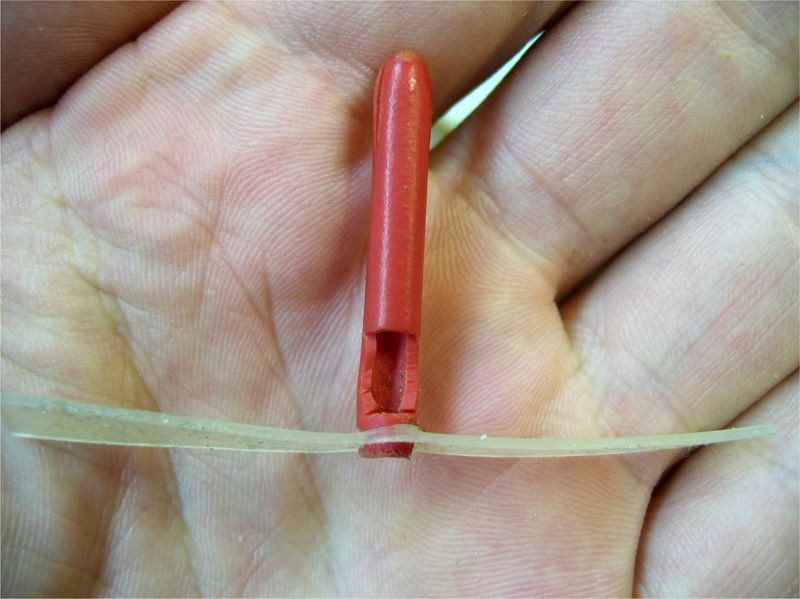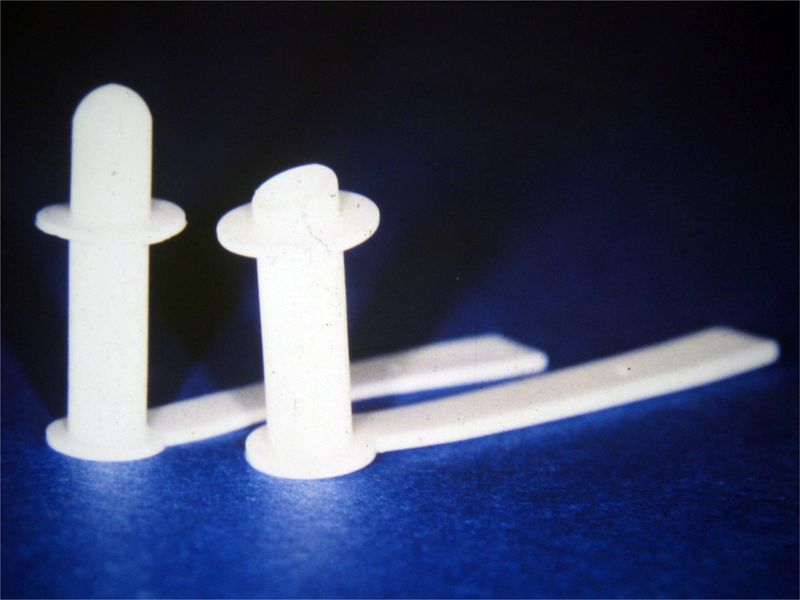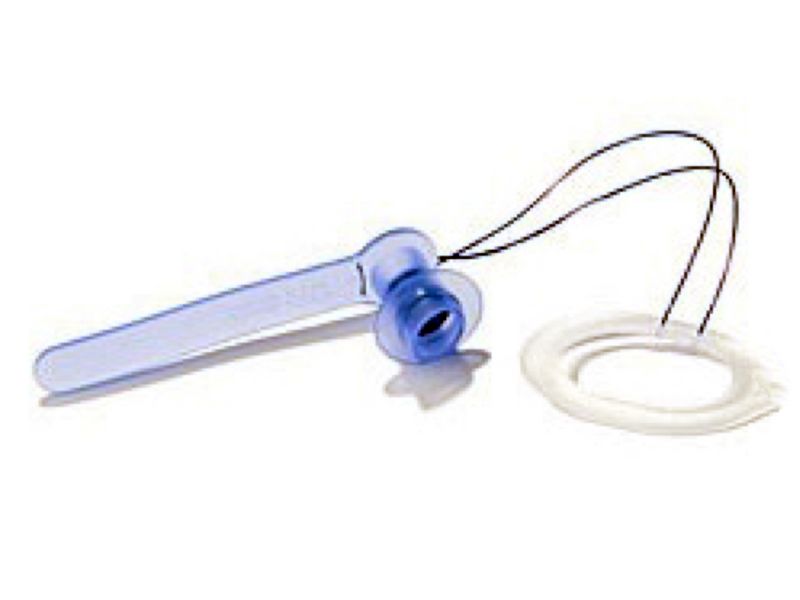Non-indwelling prostheses
Non-indwelling prostheses
The first voice prostheses were made from cut-off bladder catheters. They were inserted in the esophagotracheal fistula to keep it open (see ill. first voice prostheses prototype). These prostheses were removed, cleaned and replaced by the patient on a daily basis, which resulted in the name non-indwelling prostheses.
Over the course of their further development, the flange was added to provide greater support in the esophagus and trachea. Non-indwelling prostheses are attached to the edge of the tracheostoma by an additional retaining tape, and usually have a smaller shaft diameter than indwelling prostheses.
Non-indwelling prostheses remain in use today, as they are inexpensive to use and the patient is not dependent on a doctor. Patients are usually given two of these prostheses. One is used while the other is, for instance, placed in hydrogen peroxide, which reliably suppresses the formation of a biofilm. In many cases, two prostheses will last the patient a year. As non-indwelling prostheses not only last much longer but are also much less expensive than indwelling prostheses, they are an extremely cost-effective form of voice rehabilitation. The disadvantages are the high level of involvement required of the patient, who must be able to carry out the daily change of the voice prostheses unaided. Another disadvantage is the retaining tape of the prosthesis, which has to be attached to the tracheostoma by sticking plaster.



